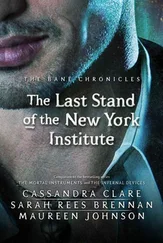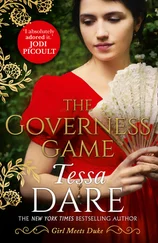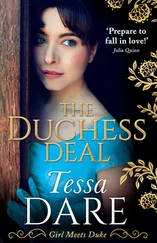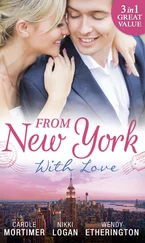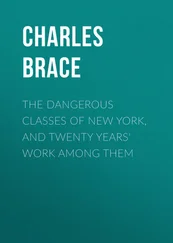“Dorothy suggested we take the kids to the Catholic Worker farm on Staten Island. They’d set up a big tent and the kids would be fed. Word of what we were doing got around the neighborhood and people started helping us. Numbers runners offered to drive us to the Staten Island ferry. Eileen wrote articles about the kids for the Catholic Worker , and people donated food and clothes.”
It was perhaps the first day care center for children.
“Dorothy’s ideas were so basic,” Mary Ann says. “Land and food. She believed in property and had the foresight to buy that farm on Staten Island. There was a tranquility at the farm—I remember sitting by a big oak tree, and a cow mooing. The chapel was part of the barn, and mass was held every morning. You celebrated nature and the hours of the day. We’d say to the kids, ‘Let’s give thanks for the cows, and the milk the cows give.’
“There was a rhythm in the whole operation. We had haystacks and corn and people growing vegetables. Whole wheat bread was baked fresh every day. People took that food to the hungry men on the Bowery.”
Moving to East Harlem and devoting themselves to the children of the neighborhood was “part of this whole dimension of life we saw at the Catholic Worker, and in Dorothy Day,” Mary Ann says. “It goes with spirituality, an example of something higher than yourself.”
The rhythms and cycles Mary Ann McCoy saw in the operation of the Catholic Worker seem to move through time as well, from the fifties to the nineties, from Staten Island to the Bowery to Harlem and throughout the country, in the pages of newspapers and books written by people who worked and lived or even just visited Chrystie Street.
Ned O’Gorman says, forty years later, “The Catholic Worker wasn’t just a circle or even just a movement—it was a sensibility, a vision.”
We are eating pancakes in the kitchen of the Storefront School in Harlem. Ned has on a pair of old jeans and a plaid shirt over a white shirt, with the sleeves of both rolled up, which is the way this headmaster dresses for work. He teaches each class in the school at least once a week and knows the names of all 104 students. This morning he begins a history class the way our old professor Mark Van Doren often began his classes, with a question: “What is an unjust man?” Later, one little boy says he never heard of Hitler, and Ned rolls his eyes toward the ceiling and says, “Holy mazackers!”
After class, kids surround Ned in the hall, and he hugs a few of them and looks above the head of a boy to say, “These are the most divine children in the universe.” When we go down to the kitchen, a mother is waiting to get some advice about a job, and a young man from the neighborhood needs a check to give a lawyer for a case that is pending, and someone else wants the loan of a ten, and a pint-size kid wants to know the name of the God of the Iraqis (“Allah,” says Ned, and the boy writes it down in his notebook, asking how it’s spelled), and Ned tastes the chicken cooking for lunch before settling down to his breakfast. Our own talk goes back to the Catholic Worker, and Ned says, “Dorothy’s influence was profound. I sometimes think I’m here in some way because I soaked up her vision of the human family.”
Mary Ann married, moved to Brooklyn, and raised two children. She lives in the Lefferts Manor–Prospect Park neighborhood, which is mainly black and West Indian now. When whites started moving out in the early sixties, “a little band of people stuck when others left, restored deserted stores and old ghetto houses. We formed an organization of homeowners, had our own security patrol, tore down dead trees and put in new trees and planted flowers. We taught classes and started food co-ops, and people from all-white neighborhoods came and said, ‘Why do all the interesting things happen in the worst neighborhoods?’”
Having dinner with Mary Ann McCoy DeWeese at Slade’s restaurant in Brooklyn Heights in 1991, I remember the time she invited me to have dinner with her and Eileen and Helen on 100th Street in East Harlem one winter night thirty-five years before. I had met the girls at a Friday night discussion at the Catholic Worker and seen Mary Ann and Eileen again when I went to the sentencing of the air raid protesters. I was fascinated that three attractive white girls would be living in a neighborhood that was largely Negro and Puerto Rican, on a street the New York Times , in an article on slums, had called “the worst block in the city.” I thought I could write an article about it—and see more of Mary Ann, whom I had a crush on.
I took the IRT to 96th Street, and then a crosstown bus through Central Park to Third Avenue. I walked up Third, which was brightly lit, to 100th Street, which was dark. I passed a trash-strewn vacant lot and found a building like most of the others, marked 321. The door was patched with raw board where glass had been, and I pushed my way through and went up the stairs. There were voices in Spanish and sounds of frying; an odor that conjured up dead cats possessed the stairway. At the third-floor front apartment the girls greeted me.
We had roast beef, bread, and wine, and talked of the civil defense trial and Dorothy Day and the Catholic Worker. A small boy came in carrying a plate, and with lowered eyes said, “For my mother.” The girls piled it high with roast beef and bread, and the boy backed away, watching the strange feast with wonder.
I left late, and the street was alive with talk and music. A group of teenage boys huddled in a doorway, harmonizing on a rock ’n’ roll song. The rhythm of a tambourine came from a storefront Pentecostal church’s nightly revival. Older men played cards on a crate in the light from a barbershop window. At the end of the block a policeman twirled his nightstick.
After several more trips to the neighborhood, I decided it was far too rich and complex to be dealt with in a magazine article. I had found the subject of my first book. I didn’t want to be a phony outsider who simply came to snoop, but a part of the life of the place I was writing about—in the way Mary Ann and the other girls were part of it in their own work. When the time came to begin the book, I would move to the neighborhood.
My crush on Mary Ann did not develop into the passionate romance I briefly fantasized, but became a lifelong friendship. Once in the beginning I took her home from a play, and in the hallway of her tenement I kissed her good night, and continued to hold her, not wanting to leave or let go, and she said in a plaintive voice I can still hear, “What do you want?”
We later laughed about her question, pretending the answer was obvious, yet I realize in retrospect she knew more than I did about my tangled, about-to-burst feelings that night. I wanted a woman’s love but wasn’t ready for it, and I also wanted something else, something more, something I couldn’t name but had instinctively come to this turbulent neighborhood to find—some connection beyond my ego-self, beyond the self that began around that time to go prone five days a week on an analyst’s couch, something Mary Ann had connected to through her work with the children, something all of us young seekers had sensed in the air of those Friday night meetings at the Catholic Worker, something Dorothy Day knew and possessed and somehow conveyed a sense of to others. It was precious, elusive, unexpected, like the sudden sweetness of the harmony from the teenagers singing in the darkened doorway on East 100th Street the first night I went to the neighborhood. A chord struck and something opened: a flower, a door, a chapter.
Oranges and Reds, purples and yellows—tropical colors flashed against the tenement grime of gray, on shirts of men playing dominoes outside bodegas and swirling skirts the women flaunted in the night. Long strung flags of washing—white, green, aqua, pink—unfurled against brown slabs of buildings that bordered the junk-glittered vacant lots. High pitch and sensuous rhythm of Latin music blasted from radios, and pointed black shoes scraped time in the streets. This was East Harlem, the Spanish part, another island within the Island, a transplant of vital new blood and dreams from Puerto Rico, the biggest newcomer influx of the fifties.
Читать дальше

